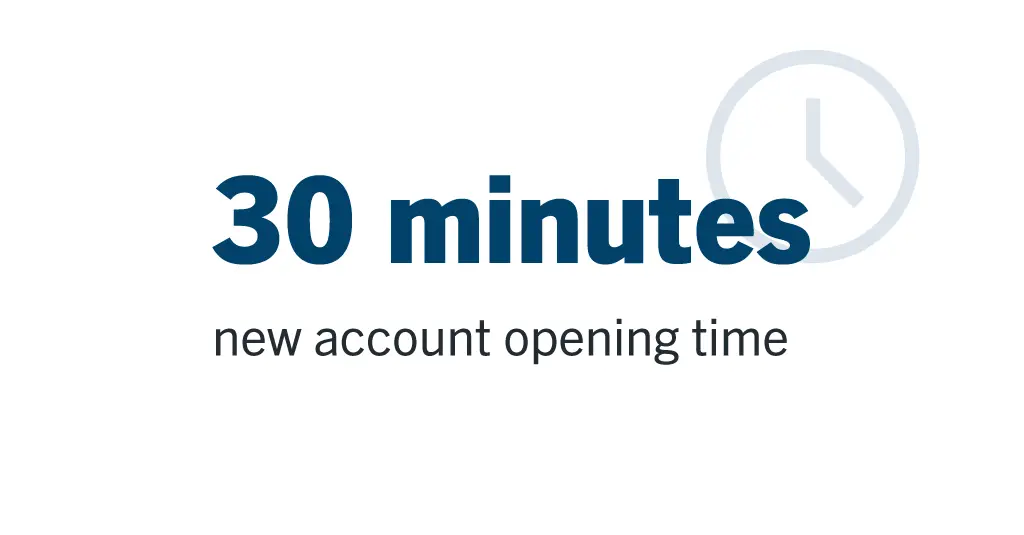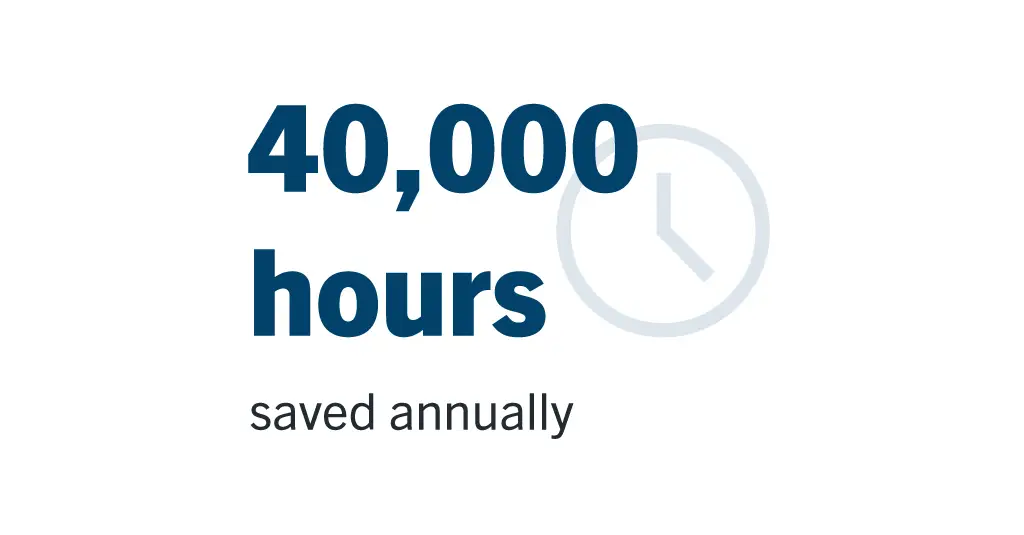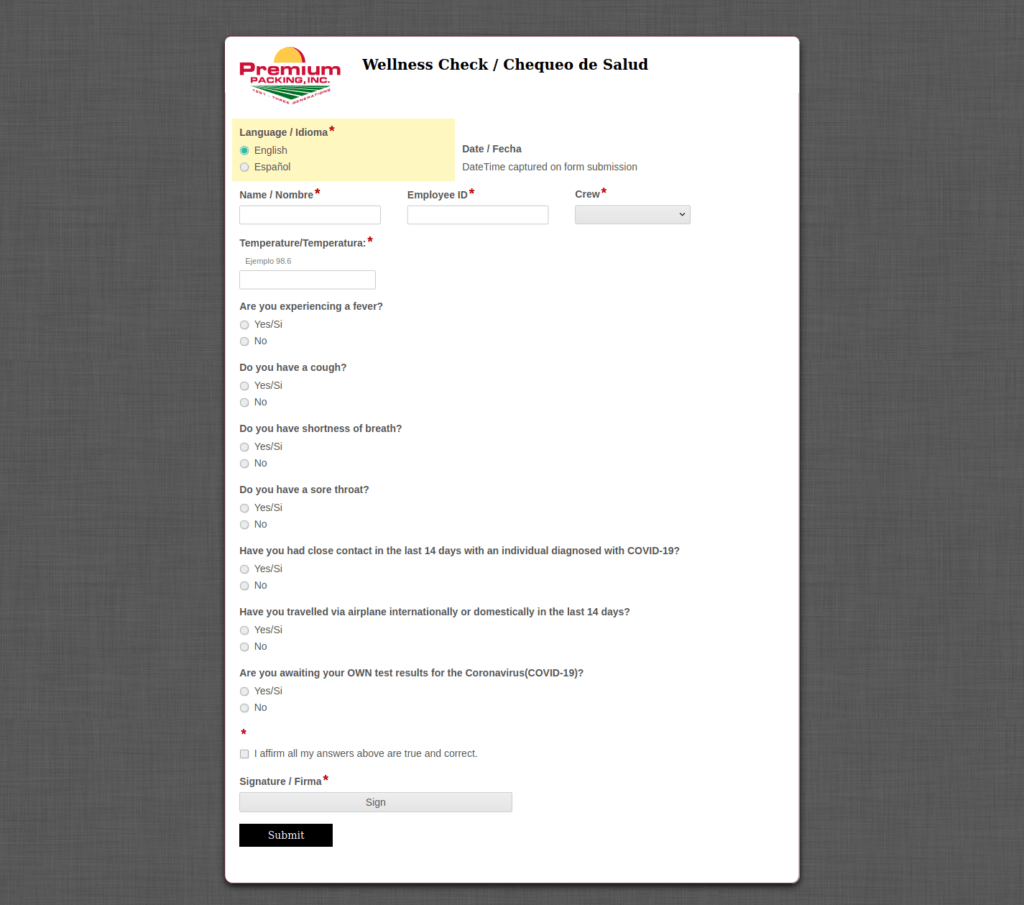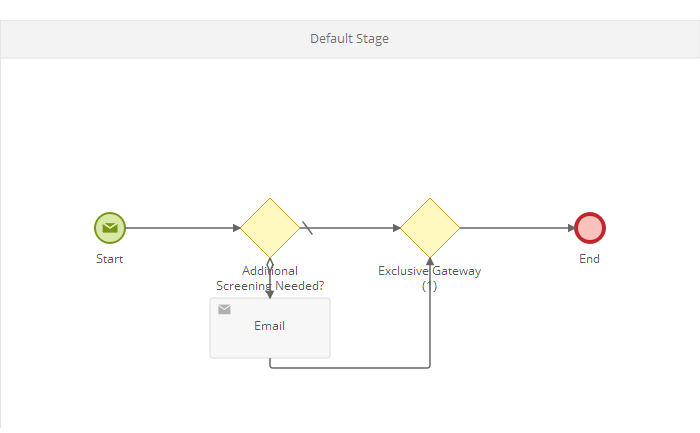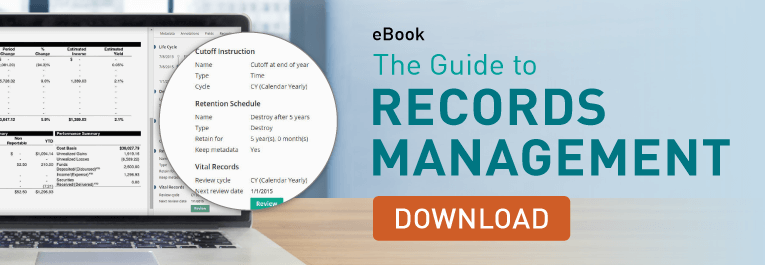Contributed By: Lucinda Williams, MMC, City Clerk, City of Fullerton, CA
The City of Fullerton, located in Orange County, CA, incorporated in 1904 and has a population of more than 142,000. Fullerton is a full-service city with over 500 employees and a five-member, by-district city council.
When the COVID-19 pandemic struck, city facilities closed to the public and most city employees worked from home. Even after the partial reopening of city hall, citizens continued to demand that the city provide more remote services. The city clerk’s office needed to prepare for the upcoming local election, but due the uncertainty of COVID-19, this year’s preparation included planning for both in person and remote candidate processing.
Fullerton partnered with their Laserfiche solution provider, ECS Imaging, to develop an online candidate nomination process using Laserfiche Forms. The process that was developed was modeled after the Orange County Registrar of Voters online candidate filing process.
Candidates Start the Process by Filling out an Electronic Form
To begin the candidate registration process, a candidate fills out the online candidate registration form. This form asks for the candidate’s identifying information and details about the office the candidate wishes to run for. The city clerk uses this information to verify the candidate’s eligibility to run for office. The form requires the candidate to complete key fields before submitting the form for review. Certain fields, such as the driver’s license number field, require the candidate to enter the exact number of characters found on a California driver’s license.
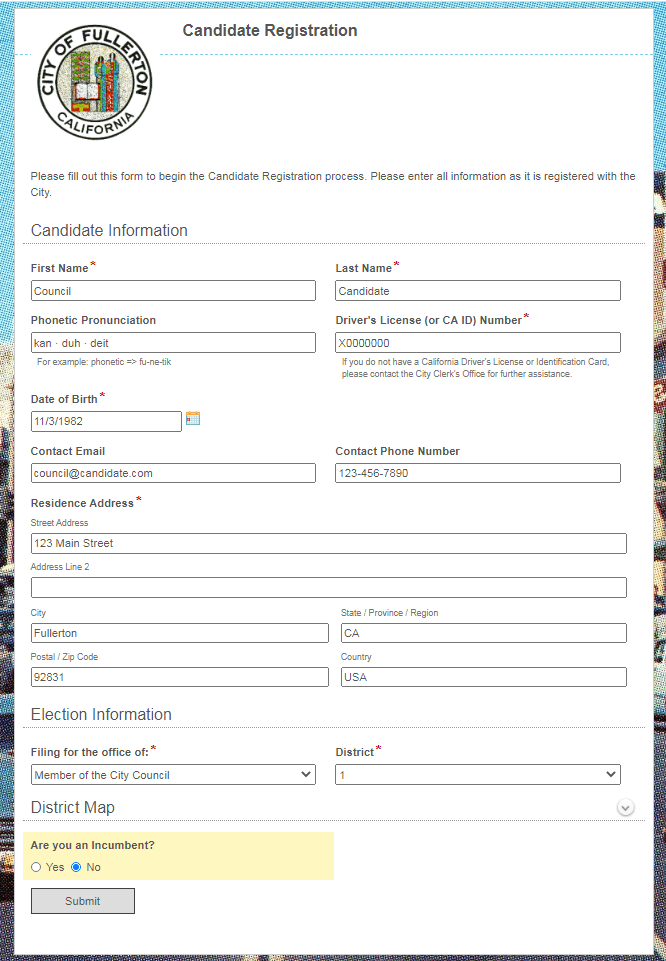
Once the form is submitted, the candidate gets an automated confirmation message on screen and via email.

The city clerk also receives an email notification when a new form is submitted. The city clerk clicks on the email link to open the task in Laserfiche Forms.
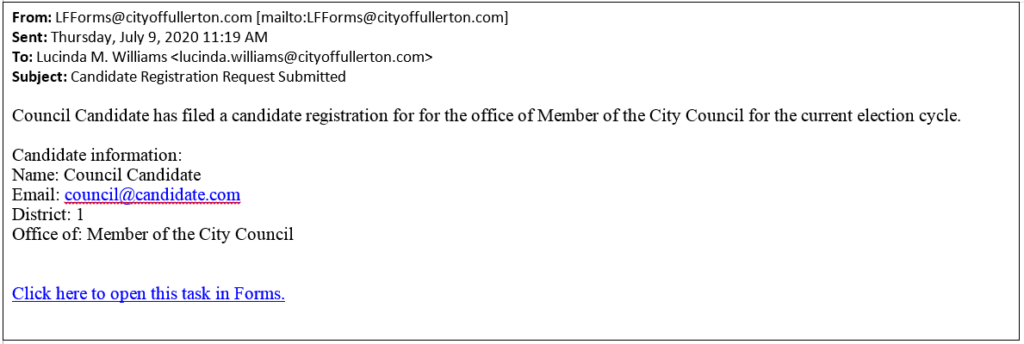
After opening the task, the city clerk sees a read-only version of the candidate registration form, except for a section on the bottom for performing the candidate eligibility determination.
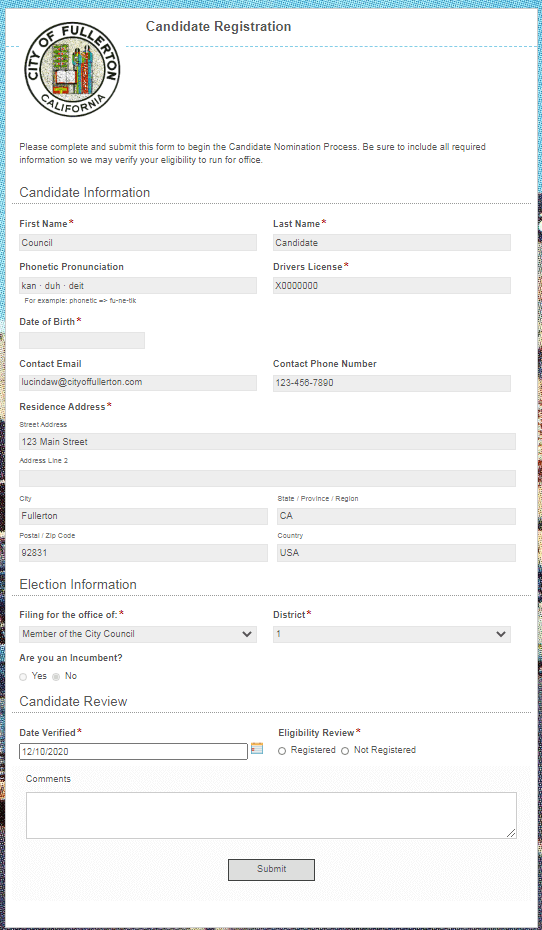
If the candidate does not meet eligibility requirements, the city clerk selects “Not Registered” and includes a notation with the reason for the rejection. The candidate then receives a notification email.

If the candidate meets all of eligibility requirements, then the city clerk selects the “Registered” option. The candidate she is notified by email. The email also lets the candidate know of an upcoming meeting with the city clerk.

The city clerk will meet with the candidate either in person or via remote web conference. The city clerk documents the meeting in the electronic form.
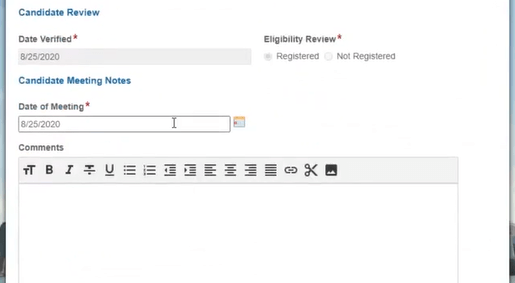
After the city clerk submits the candidate meeting form, Laserfiche Forms emails the necessary nomination forms to the candidate. The email includes a link to an electronic form that will be used to upload the completed documents, as well as an automatically generated access token. The access token provides a unique identifier to link together all of the documents submitted by this candidate later in the process.
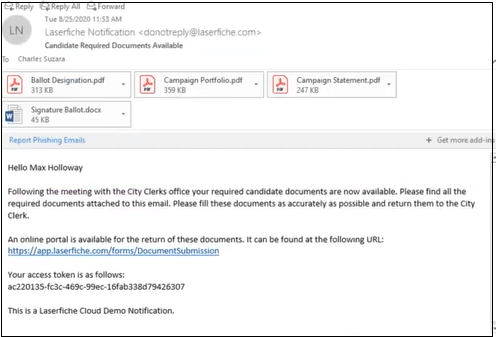
The candidate has to provide the access token in the form along with uploading the required documents.
Once the form is submitted, the city clerk is notified by email. The clerk opens the assigned task and can find all of the candidate’s information, including a link to the candidate’s submitted documents. The link opens the candidate’s folder in the repository, where all of the documents have been imported.
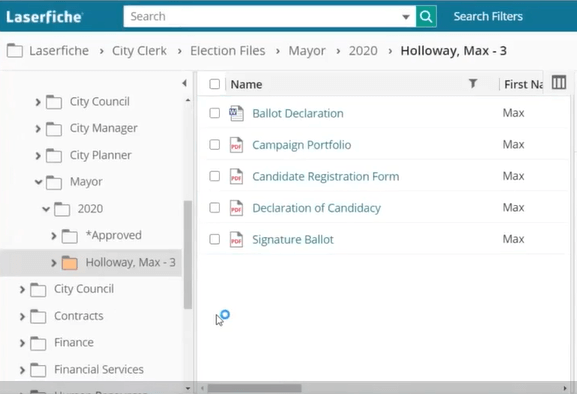
The city clerk reviews the submitted documents for completeness and adds any comments to the form before approving or revoking the candidate. The system emails the candidate of the outcome of the review.
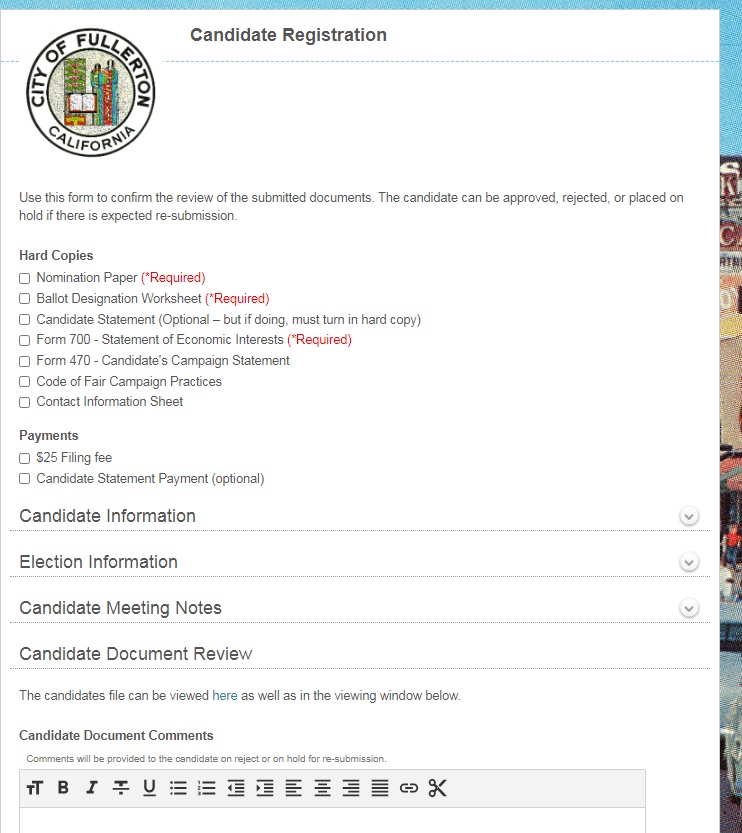
Benefits of Laserfiche
Implementing this Candidate Processing Laserfiche Forms process has provided the City of Fullerton with the ability to remain nimble and still provide excellent customer service while remaining in compliance with election regulations during the uncertainty of the COVID-19 era. The city has the ability to process candidates in person or remotely at any time. Additionally, using Laserfiche Forms for candidate processing streamlines the entire nomination process not just during COVID-19, increasing efficiency and transparency.

